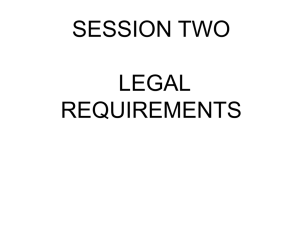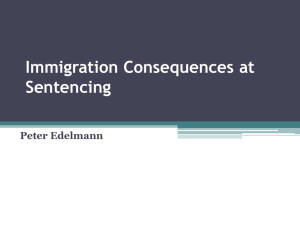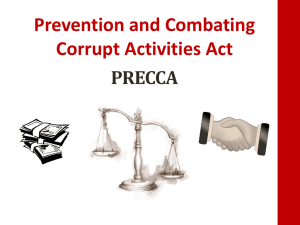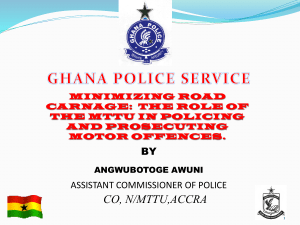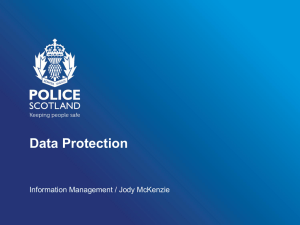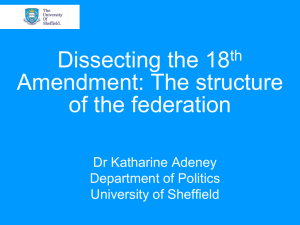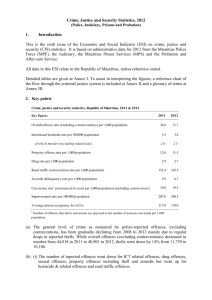1. Ticketing, Advisory Council
advertisement
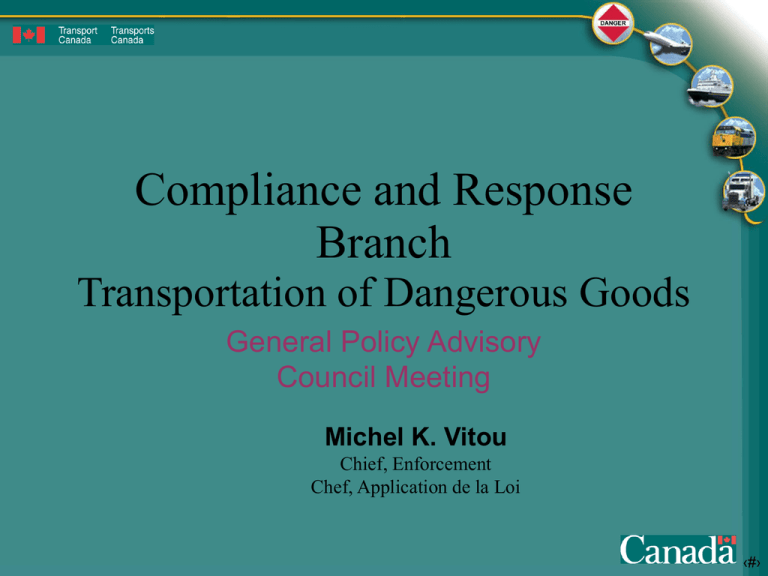
Compliance and Response Branch Transportation of Dangerous Goods General Policy Advisory Council Meeting Michel K. Vitou Chief, Enforcement Chef, Application de la Loi ‹#› Enforcement of the TDG Act TDG Inspectors have various legislated authorities at their disposal to ensure compliance and to remedy non compliance ‹#› Actual enforcement actions • • • • • Issue Warnings Issue detention orders Issue directions Prosecute The new tool…is ‹#› Issue contraventions ‹#› Ticketing under the Contraventions Act The Contraventions Act permits an alternative to the summary conviction process of the Criminal Code And Is the use of a provincial offence scheme to prosecute federal offences which are designated as contraventions in most provinces ‹#› Brief history The new Contraventions Act actually consists of the statute that was passed on June 18th, 1992 as Bill C-46 and, and extensive amendment to same, by Bill C-16 which was passed in March of 1996. The amended statute was proclaimed to come into force on August 1st, 1996. At the present time, there are about 16 statutes with regulations under the Contraventions Act that provide for ticketable offences such as the National Parks Act offence of “waterskiing on an historical canal” the Government Property Traffic Act and the Airport Traffic Regulations in eight provinces where the Contraventions Act may be used. If it was decided that ticketing in the amount of $100.00 to $500.00 per infraction was the tool to hammer home the seriousness of transportation of dangerous goods offences, it would be a fairly simple matter to have a schedule of offences drawn up and put into regulations made under the Contraventions Act. Thereafter, Inspectors in seven provinces could issue tickets for infractions of the Transportation of Dangerous Goods Act, 1992. ‹#› Applicable in 8 provinces Not applicable in the following provinces Alberta (2004 / 2005) Saskatchewan (?) Territories and Nunavut(?) Newfoundland (postponed) ‹#› The process of implementing ticketable offences under the TDG • Compare suggested fines with • Consultation with all regions on actual provincial fines what offences they would like to be ticketable and the amount of the fine$ • Submit the project to the DG • Identify the offences and draft a short form description for each contravention • Present to DOJ for for preliminary assessment • Present to our Minister ‹#› The process of implementing ticketable offences under the TDG Who will forward the request to the Minister of Justice This is the first official step to the implementation of a ticketing scheme ‹#› Implementation and the Legal process • • • • Official review by Contravention team Submission to Regulations Section Preparing the Regulatory Impact Analysis Statement Once completed the proposed amendment to Schedule I of the Contraventions Act is readied for submission • Regulation Section issues stamped copies and the prepublication notice • Issue of new stamped copies of the amendment and of the Order for approval and publication in Part I and II of the Gazette ‹#› Once implemented DOJ will provide training in all applicable regions and a SOP will be drafted and added to the Inspectors Manual And… ‹#› In force by summer 2005 ‹#› Conclusion • Ticketing is an enforcement method that can be utilized immediately upon discovery of an offence in that the Inspector can issue the ticket at the same time as corrective action is being taken in respect of the offence • No need to monitor file of proceedings in that once the ticket is issued it goes into the provincial system and monies are paid to the province • Enforcement will be consistent throughout Canada (where applicable) • Penalties imposed will be consistent, from $400 to $1000 per offence, (per day if applicable) in all provinces that have agreed to administer the Contraventions Act ‹#›


